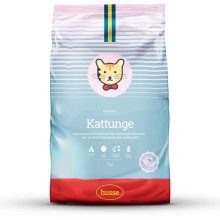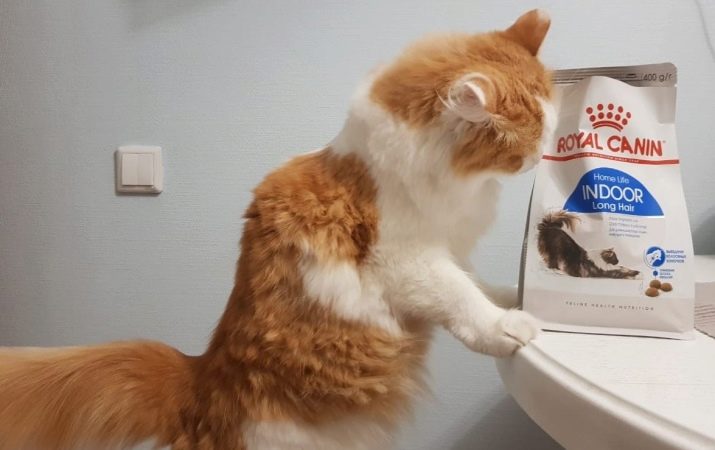How to properly transfer a cat to another food?

A pet's diet directly affects its health and well-being. Therefore, truly caring owners always take a serious and responsible approach to the issue of nutrition and drawing up a menu for their pet. But feeding a cat or a cat with the same food all your life will still fail. At certain times, you will have to face the need to switch to a different diet. For what reasons it may be necessary to transfer a cat from one food to another, and how to do it correctly and quickly, we will tell you in this article.

Reasons for changing the diet
Pets grow and develop. The task of a caring owner is to sensitively monitor the well-being, state of health and other characteristics of his pet. After all, it is the owner who creates all the conditions for the cat, including the formation of the animal's diet. In turn, cats in the process of life, like humans, develop their own habits and preferences. Therefore, to the surprise of the owner, the pet may be completely reluctant to accept other food. But still, any owner of purring pets will sooner or later have to face the need to change the cat menu.
This can happen for one of the following reasons.
- The kitten has reached puberty. An adult animal requires fewer nutrients and vitamins. For convenience, feed manufacturers label their products by age.
If you continue to give an adult cat food intended for kittens, over time, an excess amount of trace elements that it no longer needs will accumulate in its body. And this is just as harmful as their lack, and can lead to various disorders and harm the health of the animal.Therefore, veterinarians recommend adjusting the diet of the animal when it reaches adulthood.


- During pregnancy, the cat again needs enhanced nutrition. It is especially important at this time to give the animal food with a sufficient content of proteins and vitamins. A pregnant cat often has a strong appetite and begins to eat in large portions. But this creates an additional unwanted burden on her digestive system. Therefore, during pregnancy, it is better to transfer your pet to enriched food for kittens or for pregnant cats. At the same time, the amount of feed per intake can be avoided.



- Neutering a cat or cat affects hormones. Therefore, the owner should carefully monitor the diet in order to avoid the development of obesity in the pet. Unfortunately, neutered animals tend to become overweight in most cases.

- Food allergy or intolerance to any feed ingredients are also a good reason to change your diet.


- Advanced age a pet leaves a big imprint on its general condition and on the performance of the digestive system. Often, older cats already have certain diseases that need to be taken into account when drawing up their menu. Older animals need to limit the amount of protein in their food, as this component puts a lot of stress on the liver and kidneys. But the regular intake of vitamins with food for an elderly pet is very important and necessary.


- Unfortunately for the owners, fluffy purrs are not immune from various diseases. During treatment, your doctor will most likely recommend a change in diet. Often there is a need to transfer a sick cat to a special medicated food.
But in no case do not choose a medical food for your pet on your own. Consultation of a veterinarian in such cases is required.



- Sometimes firms, for one reason or another, stop producing food that your pet is used to. Since it is now impossible to find it on sale, willy-nilly it will be necessary to look for an alternative for the cat.

How to change feed quickly and correctly?
Sometimes the transition to a different diet happens very quickly and without any problems. But not all cat owners are so lucky.
Purrs often become real gourmets and all kinds of tricks, continuing to demand their favorite and familiar delicacy.
And what owner is not moved at the sight of a plaintive begging glance?
Also in the arsenal of cats there is an expressive meow, as well as a demonstrative rejection of unwanted food. You may have to face some of the above when you change cat food. However, you need to be persistent and patient when transferring an animal to a different diet. And the following tips will help you make the transition to a new diet easier for both your cat and you.
- Veterinarians categorically do not recommend changing the usual food abruptly... In the cat's menu, new food should be included gradually. In the first couple of days, add 25-30% of the introduced product, and leave the rest of the food the same. Over the next days, gradually increase the proportion of new feed by 10-15% per day. In about 10-12 days, the animal should completely switch to another diet.

- Do not mix common food and new food in the same bowl.... Better to give them at different times.

- During the period of accustoming to a new diet, monitor the condition of the animal... If he has symptoms of allergies, indigestion, general lethargy, then the new component should be excluded from the diet and the cat should be shown to the doctor.

- When switching to dry food in the first days, it should be soaked and given to the animal soft. The introduction of the dry product into the cat's diet is also carried out in portions. Remember that pet food that feeds on industrial dry food requires a lot of fluid.Make sure your cat has constant access to fresh water.

- The reverse transfer of an animal, from industrial feed to natural feed, is often not easy. Dry pellets have an attractive and rather strong odor, while natural meat does not irritate the animal's touch as much. A cat accustomed to eating dry food may simply not be interested in meat products.


Often in such cases, you have to apply compulsory influence... The animal should be left without its usual food for a while, and after a short period of unloading, a new product should be presented to it. The method is not one hundred percent, sometimes it is necessary to make several attempts.
In addition, many pets, knowing the owner's weakness and kindness, begin to take him in response with a moral "starvation", demonstratively starving at a full bowl.
remember, that the cat may not eat for up to 3 days without harm to its health. But accustomed to a regular diet, home pets very often give up after a day.

Veterinarian warnings
When changing food, the owner should be careful, patient and attentive to his pet. Beware of making the following mistakes when transferring your cat to a new food.
- Some feeds cannot be mixed. The manufacturer warns about this on the packaging. Therefore, study it carefully when purchasing new food for your pet.

- Do not try to force feed the cat.... This will put him under stress. Most likely, after the experience, he will form an aversion to the product that was fed to him against his will.

- Prevent your cat from starving for more than 3 days. If your pet stubbornly refuses new food, give him a familiar treat. Try another food habit again after 2-3 days.

- Never change the diet of a domestic cat all at once. The transition should be gradual, as the animal's digestive system takes time to adapt to new food.

See below for details on transferring a cat to another food.
































